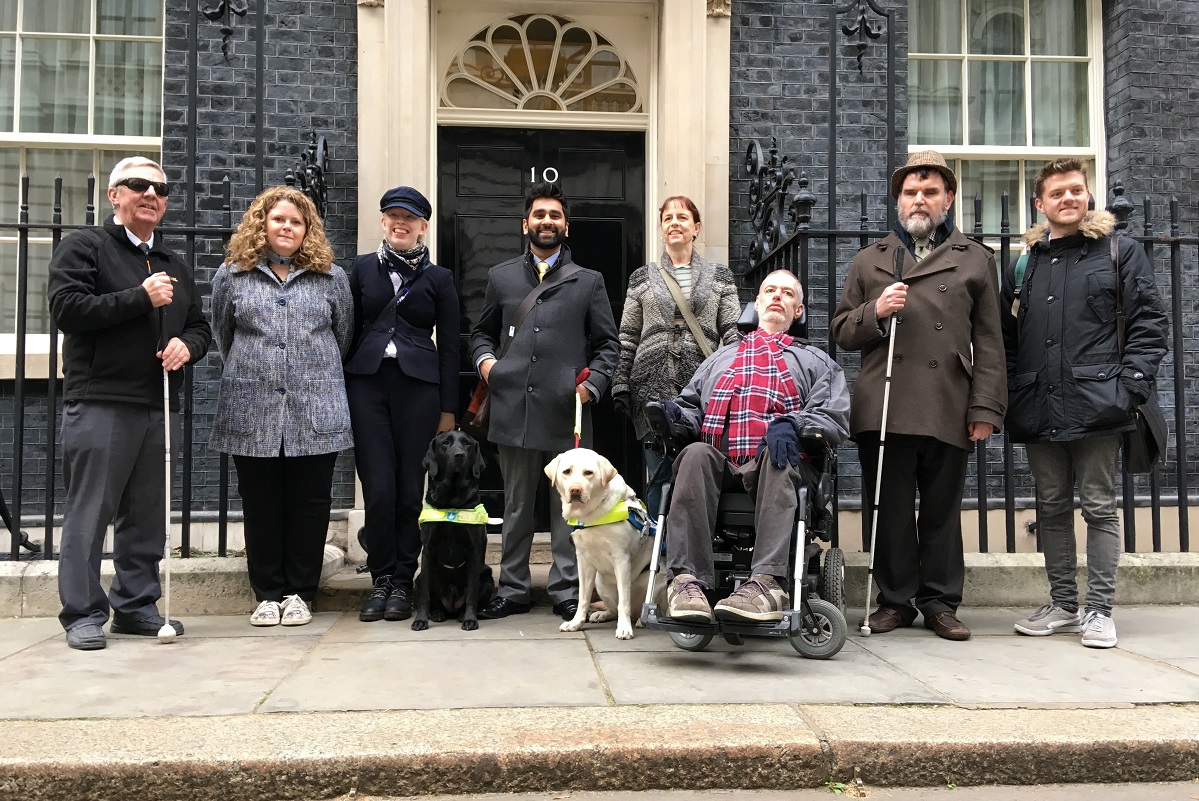You are viewing 1 of your 1 free articles
Shelter is right to call for new homes, but properties must meet the needs of disabled people
Planning authorities should ensure all new homes are built to higher disabled access standards, writes Sheron Carter
We’ve been really impressed by the Shelter commission’s Building for our Future report last week, which makes such a compelling case for investment in new social homes.
The case studies and analysis demonstrate clearly how an increase in social housebuilding would benefit the whole country.
The report shows the potential benefits to people in desperate need of suitable homes, the communities in which they live, local and national finances and the housing market overall.
With Habinteg’s focus on the housing needs of disabled people, we were particularly interested in the personal stories of disabled and older people contained in the report.
“It’s vital to make sure that new homes are designed to be flexible and adaptable to the changing needs of their occupants”
For example, Anthony’s story is typical of the way many disabled people are forced to ‘make do’ with homes that don’t meet their needs because they cannot find or access housing that does. He’s a wheelchair user living in a privately rented house with his partner and two children.
He describes life in the house that has steps up to the front door, in which he’s unable to access the bedrooms or upper floor, sleeps downstairs and uses a portable WC.
Disabled people are more likely to live in social housing than non-disabled people and the number of people with access needs is rising rapidly.
So Habinteg firmly believe that to ensure maximum value from public investment in new homes, it’s vital to make sure that they’re designed to be flexible and adaptable to the changing needs of their occupants, whatever the tenure type but most importantly in social housing.
We also need to ensure that sufficient properties are built with the access needs of full-time wheelchair users in mind.
So while national attention is placed on the need for more social homes, we urge all planning authorities to specify requirements for new homes in their area to be built using the higher access standards set out in Part M of building regulations.
Part M category two is broadly similar to the more descriptively named Lifetime Homes standard and have a host of hidden adaptive super powers that make them great for all kinds of households, including families with young children, older people and anyone who has a temporary or more long-term need for adaptations in the home.
“We urge all planning authorities to specify requirements for new homes in their area to be built using the higher access standards”
Category three homes are designed to meet the needs of wheelchair-user households. Our recent research shows that currently fewer than 20% of authorities state a requirement for a specific proportion of new homes to meet accessible standards.
Designing in accessibility and adaptability from the outset can make adaptations faster and cheaper to make and support people to stay put when life events mean that their needs change. This in turn can take pressure of health and social care services so it’s easy to see why it makes a good value investment with public money.
Shelter’s report also calls for increased tenant engagement and involvement with housing providers.
We think this is crucial and we’re happy to have a range of tenant bodies and engagement opportunities that we plan to build on in the year ahead.
Shelter specifically recommends the establishment of a separate regulator to ensure the voices of social renters are heard.
Last year’s influential report from the Equality and Human Rights Commission (EHRC), Housing and disabled people: Britain’s hidden crisis, shows how important it is that providers engage specifically and deliberately with their disabled tenants.
We’d recommend all providers to make use of the toolkit that we subsequently produced in collaboration with the EHRC which provides a full and thorough best practice guide for running engagement activities that include disabled people. And if a new regulator is forthcoming, we’d welcome a standard or guidance to all social providers to make sure that disabled people are fully included in a meaningful way that can improve their experience of finding and maintaining a tenancy in the right home for them.
Shelter’s report and recommendations could make a powerful impact on the drive towards more and better social housing. With the numbers of disabled and older people rising we must ensure that their needs are fully reflected in the sector’s future plans and priorities.
Sheron Carter, chief executive, Habinteg
At a glance: the Shelter commission’s recommendations
Complaints and regulation
- The government should create a new consumer regulator to protect renters and ensure their voices are heard. This should operate alongside the Regulator of Social Housing, focused on its core economic brief.
- Social housing residents need better protection. Government should require standards of social housing to be proactively inspected, publicly reported, and strongly enforced in order to hold failing landlords to account.
- If residents are to be protected and given a voice, there must be clearer standards for social housing providers. The government should direct the regulator to make consumer standards more specific; setting clear, minimum expectations, like timescales for dealing with complaints.
- All groups of residents (whether recognised by their landlords or not) should be able to refer their concerns directly to the new regulator where they have common concerns they believe are caused by a systemic failing in the landlord’s services.
- Residents should not have to prove they might be at risk of serious detriment for the regulator to intervene. The government should remove the ‘serious detriment’ test for intervention in complaints about social housing, which is a barrier to proper enforcement of consumer standards.
- To make it easier for social renters to get redress on individual complaints, barriers to complaining must be removed. The government should remove the democratic filter for referral to the Housing Ombudsman
- Residents must be given support to complain. The government should extend the Legal Help scheme to cover detailed advice and support to make a referral to the ombudsman or the regulator.
Tenant voice and involvement
- Tenant panels should be encouraged and taken seriously. The government and Regulator should urgently require landlords to actively support the formation of tenant panels and share good practice on how this should be done.
- Residents of social housing must have a voice with national, regional, and local government. Government should support establishment of an independent tenants’ voice organisationor tenants’ union, to represent the views of tenants in social housing within national and local government. It should involveas wide a range of tenants as possible.
- Residents must have a leading voice in major works to existing homes or neighbourhoods. The government’s good practice guidance on estate regeneration should be revisedto reflect this.
- The government should compile good practice on cooperative and mutual social housing models. Transfers of existing homes to such models should only happen if triggered by tenants, and if voted for by a majority of tenants.
Reforming private renting
- Government should require all private landlords with over25 homes to register with the new consumer regulator.
- The new consumer regulator should set consumer standards for all private rented housing.
- The government should increase resources for local enforcement to tackle rogue landlords and poor conditions, in line with the growth in the number of private rented properties.
- The government should protect private renters from no-fault eviction. It should end Section 21 by changing the law so permanent tenancies are the legal minimum for all private renters. It should make sure they are protected from eviction by above-market rent increases. The government should explore how to introduce more detailed information about rent levels for different property types at a ward level.
Building more social homes
- Government should deliver enough social homes over the next 20 years for the 3.1 million households who will be failed by the market, providing both security for those in need, but also a step up for young families trying to get on and save for their future.
- Government should reform the Land Compensation Act 1961 so that landowners are paid a fair market price for their land, rather than the price it might achieve with planning permission that it does not actually have. It could do this most simply by; amending Section 14 so that no account is taken of any prospective planning permission in land designated by local authorities or city regions for infrastructure including housing; amending Section 17 so that Certificates of appropriate alternative development cease to apply in those areas designated by local authorities or city regions for development.
- In future assessments of housing need, government should specify the need for social housing.
- Government should remove the exemptions that mean Section 106 rules do not always apply to new developments and conversions.
- Government should ensure that any Right to Buy scheme(s) are sustainable, by replacing any social housing sold.
- Government should embrace modern methods of construction in a way that reduces risk and builds public confidence, using methods that are proven to work over the long term.
- Government should set a standard to ensure investment in maintaining and improving homes and neighbourhoods over their full lifetime.
- Anyone involved in delivering social housing should ensure that new social homes are delivered as part of tenure-blind, mixed-community developments. This includes avoiding design that will contribute to a sense of exclusion, e.g.avoiding separate entrances to the same building that divide households based on tenure.














